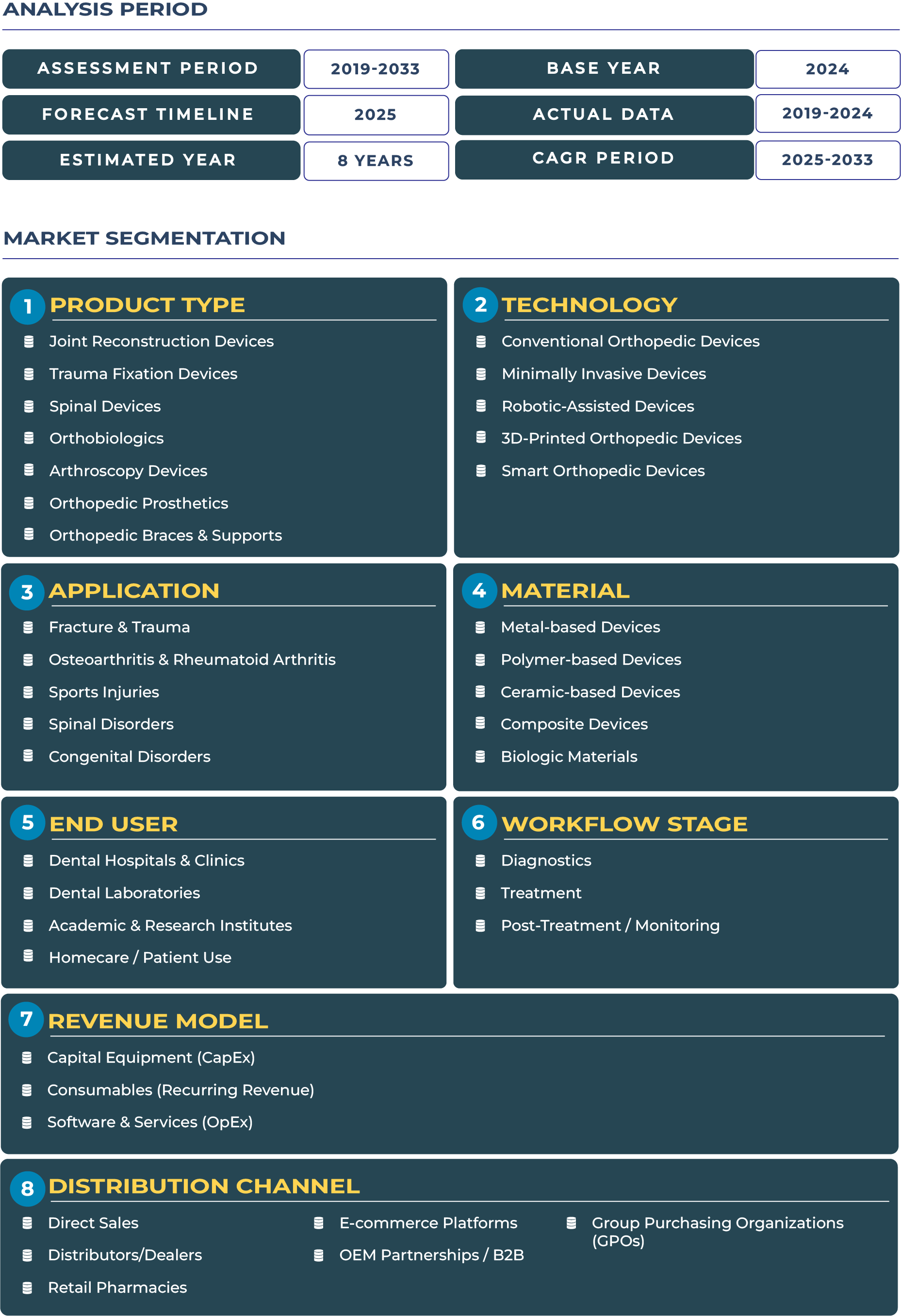Indonesia Orthopedic Devices Market Outlook: Insurance Expansion, Infrastructure Growth, and Access Challenges
Indonesia’s healthcare landscape is undergoing a structural transformation, with the expansion of the BPJS National Health Insurance significantly improving access to advanced treatments, including orthopedic care. The inclusion of orthopedic surgeries such as joint replacements and trauma fixation within reimbursement schemes has boosted affordability and access for millions of Indonesians, especially in lower- and middle-income groups. This shift is a defining factor driving growth in the orthopedic devices market.
The Indonesia orthopedic devices industry is estimated at USD 987.7 million in 2025 and is projected to reach USD 2,291.6 million by 2033, expanding at a CAGR of 11.1% during 2025–2033 (DataCube Research). Growth is supported by a young but aging population, increasing accident-related trauma cases, and rising demand for spinal implants and arthroscopy devices. However, the true acceleration lies in broader healthcare coverage, which is creating demand beyond Jakarta and other metropolitan hubs, making advanced orthopedic devices more accessible to rural and semi-urban populations.
Despite its strong growth trajectory, the orthopedic devices sector is shaped by Indonesia’s complex geography and economic diversity. With over 17,000 islands, distribution logistics remain a key challenge, often delaying product availability. Nevertheless, the orthopedic devices ecosystem is being strengthened by public-private investments in healthcare infrastructure, new hospital expansions in tier-2 cities, and collaborations between local distributors and multinational orthopedic device manufacturers.
Drivers & Restraints: Expanding Healthcare Access Meets Market Complexity
Insurance-driven affordability and rising hospital networks fueling market expansion
A major growth driver in the Indonesia orthopedic devices market is the expansion of national insurance coverage, which has broadened access to orthopedic surgeries and devices previously considered cost-prohibitive. The growing network of private hospitals across Jakarta, Surabaya, Medan, and Makassar has also amplified demand for advanced orthopedic implants, particularly in trauma fixation and spinal devices. Furthermore, the large underpenetrated population creates significant room for device adoption. As per the Ministry of Health, Indonesia, healthcare infrastructure expansion under public-private partnerships continues to add orthopedic service capabilities in regional nodes, making device access more geographically distributed.
Fragmented logistics and regulatory hurdles restraining rapid adoption
Despite favorable growth indicators, challenges persist. Indonesia’s archipelagic geography creates fragmented logistics networks, increasing delivery costs and slowing distribution timelines for orthopedic implants. Price sensitivity is another barrier, particularly in rural areas, where patients rely heavily on government insurance and low-cost solutions. Furthermore, regulatory frameworks vary across provinces, creating unpredictability in device approval and import processes. Domestic manufacturing is growing but remains limited in scale, leaving the orthopedic devices industry heavily dependent on imports from multinational suppliers, which increases vulnerability to currency fluctuations and supply chain disruptions.
Trends & Opportunities: Regional Healthcare Growth Driving New Frontiers for Orthopedic Devices
Private hospital expansions and insurance-driven demand shaping orthopedic adoption
One of the most significant trends in Indonesia Orthopedic Devices landscape is the rapid expansion of private healthcare chains, particularly in urban and semi-urban centers. Hospitals in cities like Bandung and Surabaya are increasing their orthopedic service lines, often with specialized trauma centers. Insurance-driven demand is also pushing hospitals to expand their capacity for orthopedic surgeries, leading to higher procurement of implants and prosthetics. Simultaneously, localized production of low-cost implants is beginning to take shape, addressing affordability gaps while reducing dependency on imports.
Localized implants, regional hubs, and training centers emerging as growth opportunities
The opportunities in Indonesia Orthopedic Devices sector lie in addressing systemic gaps. Localized implant manufacturing tailored to regional price points has strong potential to expand market penetration. Establishing regional distribution hubs in key islands beyond Java—such as Sumatra and Sulawesi—can significantly reduce logistical inefficiencies. Moreover, investment in surgeon training academies dedicated to orthopedic specialties is becoming critical, as device adoption depends heavily on clinical expertise. Multinationals and local firms collaborating on training programs and aftercare services can strengthen long-term market positioning and build trust among healthcare providers.
Competitive Landscape: Global Leaders and Local Players Reshaping Indonesia’s Orthopedic Ecosystem
The orthopedic devices market in Indonesia is dominated by international companies such as Stryker, Zimmer Biomet, and Johnson & Johnson’s DePuy Synthes, which focus on high-value segments like joint reconstruction and spinal implants. These companies rely on partnerships with private hospital chains and local distributors to overcome geographic and logistical barriers. Recent strategies have included setting up regional hubs in Jakarta and Surabaya to improve supply timelines and introducing more affordable implant ranges to cater to price-sensitive segments.
Local companies and regional players are also becoming more relevant by offering cost-effective trauma fixation devices and prosthetics. Training collaborations between multinationals and Indonesian hospitals, initiated in 2023, aim to strengthen surgical expertise and accelerate the adoption of advanced arthroscopy devices. Overall, the competitive dynamics emphasize the importance of affordability, regional presence, and clinical partnerships to sustain growth in Indonesia’s diverse healthcare ecosystem.







